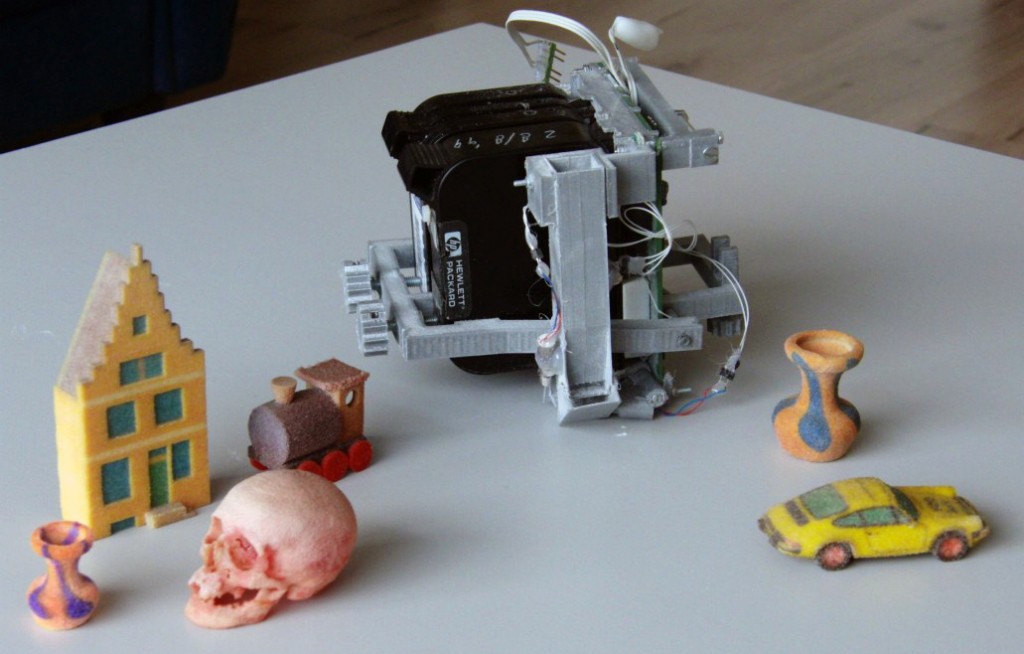Though there have been numerous attempts to bring full-color 3D printing to the desktop, the technology is still far from widespread and affordable. The closest solution currently on the market is the $5,995 full-color ARKe paper 3D printer from Mcor. Other than that, color-mixing extruders are slowly making their way into the market, via brands like ZMorph and XYZprinting, but are still far from achieving the full spectrum of colors desired by consumers and prosumers. Lunavast, from Japan, has put together an interesting package for full color dying of FDM prints that has some potential. I also met a talented PhD team in Taiwan that is working on their own full-color FDM process, which seems very promising. Most recently, I was introduced to a new DIY development called Colorpod, published by one of 3DPI’s community writers.
What the inventor of the Colorpod, Aad van der Geest, has created is not a filament system, but an inkjet powder device that can be added onto RepRap-style 3D printers at a low cost. For a proposed price of $350, the Colorpod essentially converts desktop FFF machines into inkjet powderbed 3D printers. By combining a CMYK inkjet cartridge with a powder funnel and a roller, the Colorpod deposits powder and ink onto the print bed before flattening the material with the built-in roller. The Colorpod uses two USB ports connected to the printer and the computer, one for managing the mechanics of the printer and the other for managing the inkjet cartridge.
As it turns out, van der Geest claims to have been working on this project since the 1990s, around the time that MIT was first developing the powderbed process that would eventually become ZCorp’s full-color 3D printing process. This technology was then transferred to 3D Systems upon the acquisition of ZCorp in 2012. Colorpod is now open to beta testers in the Netherlands and will be made available for purchase by the end of the year.
Van der Geest is also considering expanding the project to apply a similar inkjet technique to FDM processes. And, as we’ve seen from companies like Lunavast, such a method may be what finally brings true full-color capabilities to desktop FDM.



